
The object in the world
CCA’s Furniture program meets the future with community building, critical questions, and full-circle materiality.
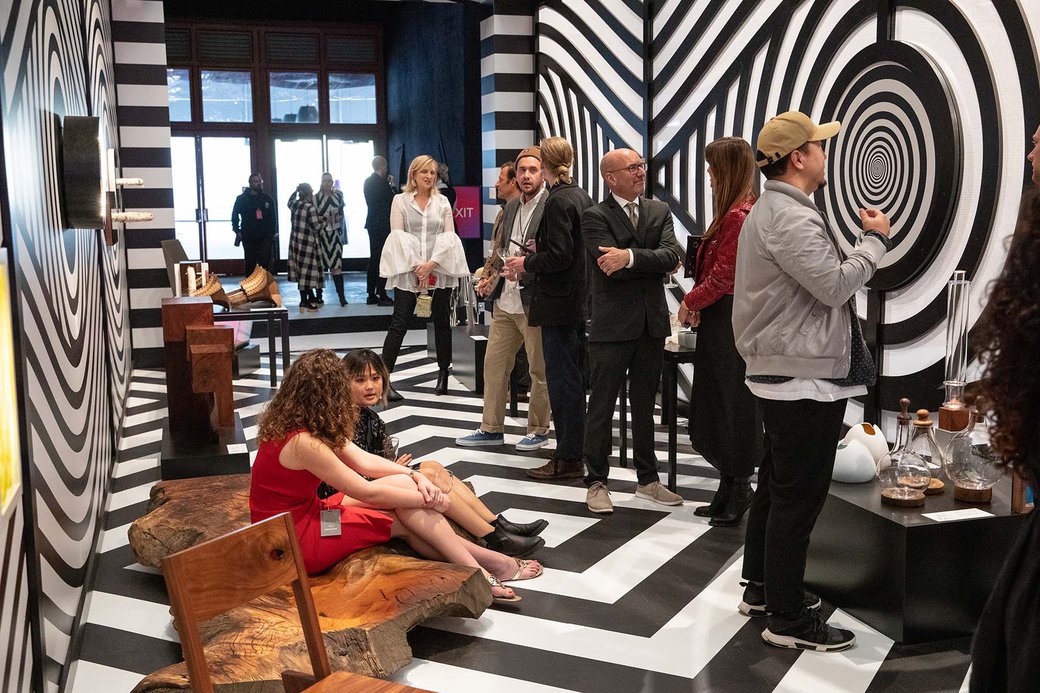
Students, faculty, and the community enjoy the opening of CCA’s booth as part of the 21POP installation at FOG 2020. Photo by Nicholas Lea Bruno/CCA.
A full-circle vision
Furniture is more than what we sit on. It characterizes our spaces and changes our interactions. The students in CCA’s Furniture program are examining the effect of their work, all the way from source materials to the conversations it can create and stories it tells about who we are and what we find valuable.
In January, several of these students had the extraordinary opportunity to show their work in the 21POP installation, curated by Stanlee Gatti at SFMOMA’s FOG Design+Art fair. (Gatti, one of the country’s top event designers, is a longtime supporter of CCA and currently serves on the Board of Trustees.) The students’ pieces were publicized, celebrated, and sold—many within the opening hours of the fair. This kind of partnership and tangible opportunity is characteristic of the program, which supports students in sourcing materials, engaging in peer-led collaborations, and doing custom production for local businesses.
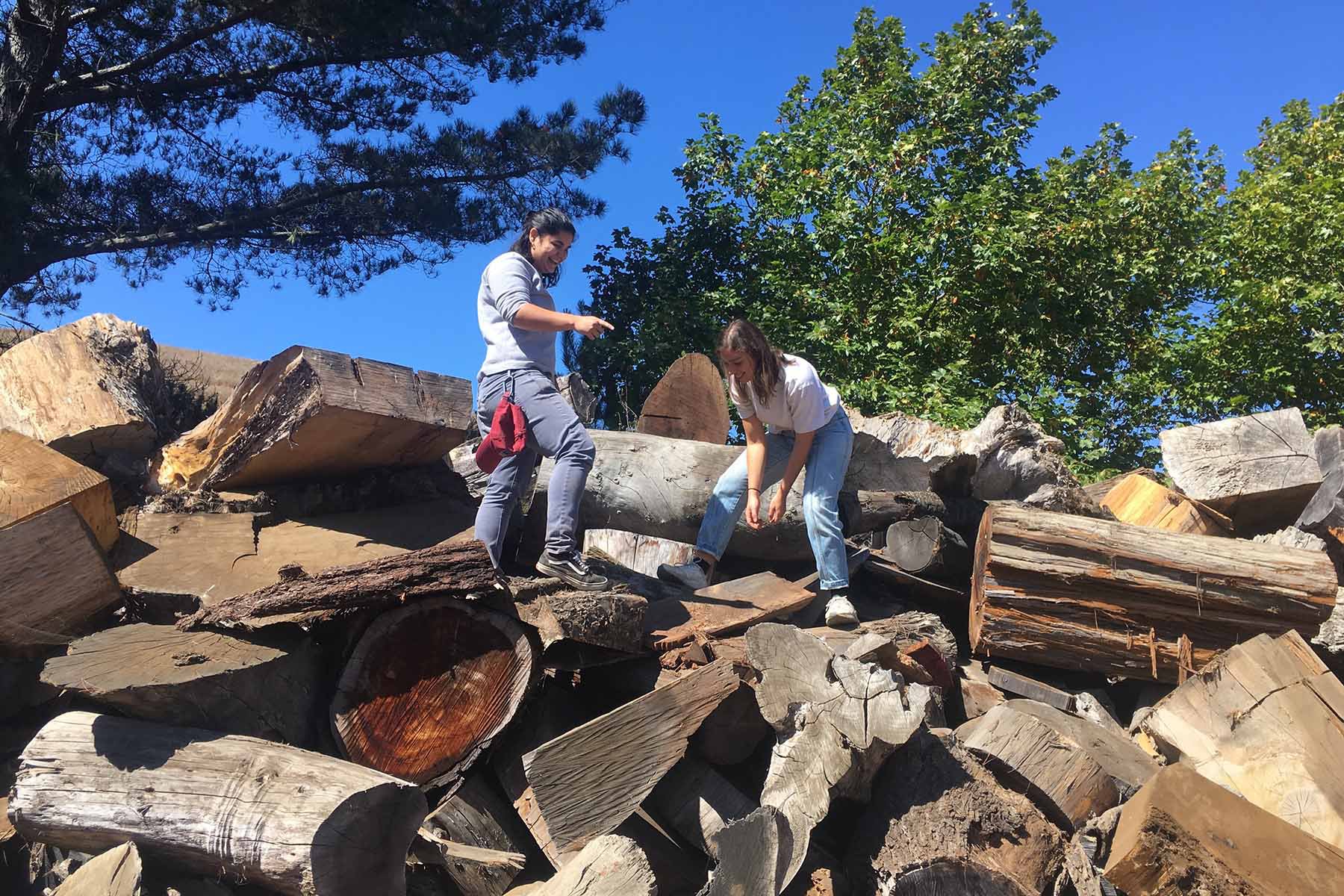
Furniture students select pieces at Arborica in Marin, where master craftsman Evan Shively specializes in urban tree fall and responsibly sourcing wood from the region. Photo by Russell Baldon.
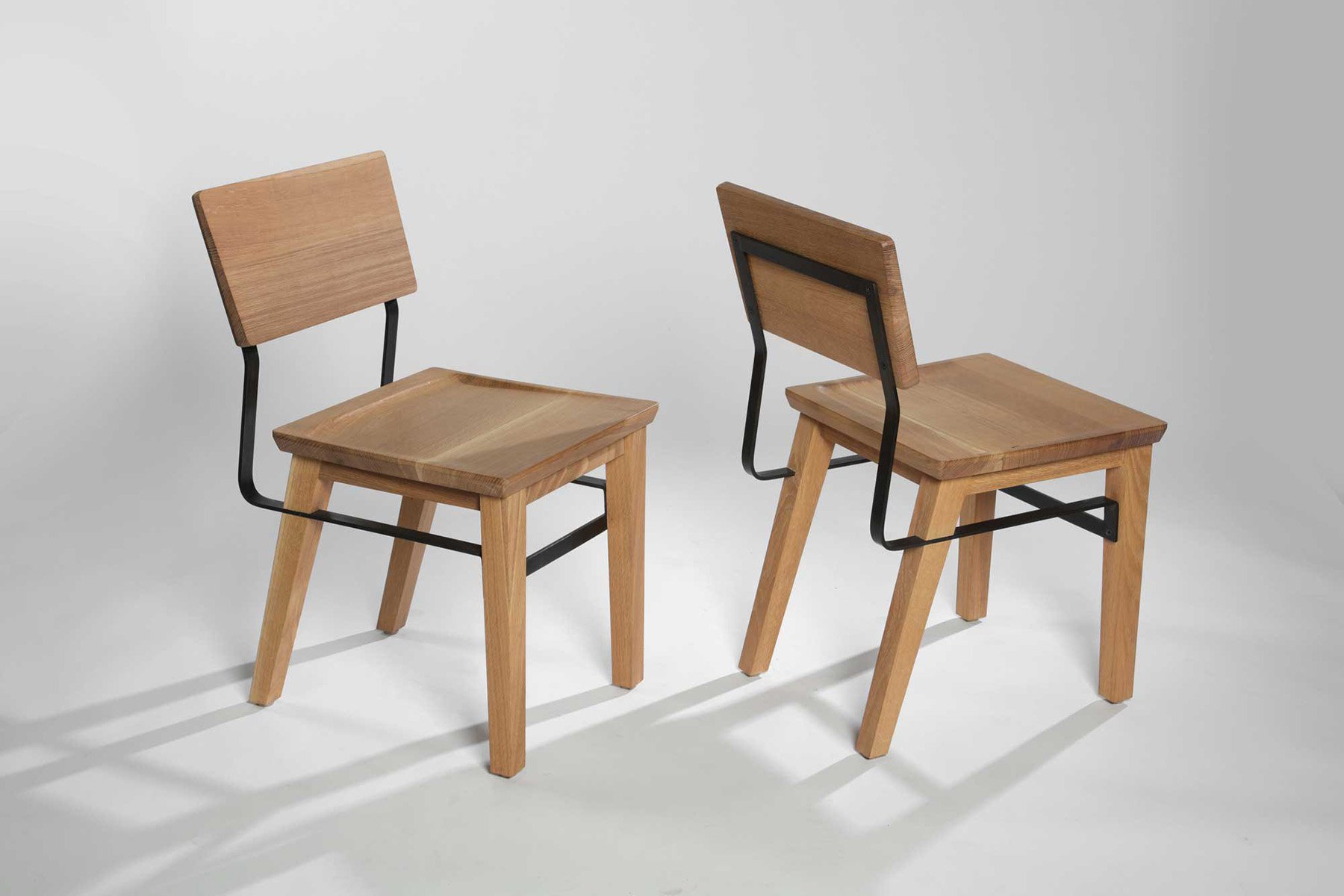
When the owners of the popular San Francisco restaurant Camino opened Kebabery in Oakland, CCA students were invited to make chairs for the new space. These Kebabery chairs were created by students Stephen Moore, Malachi Trent, Kjetil Smedal, and Nathaniel Hedges, led by Assistant Professor Katherine Lam. Photo by Mark Serr.
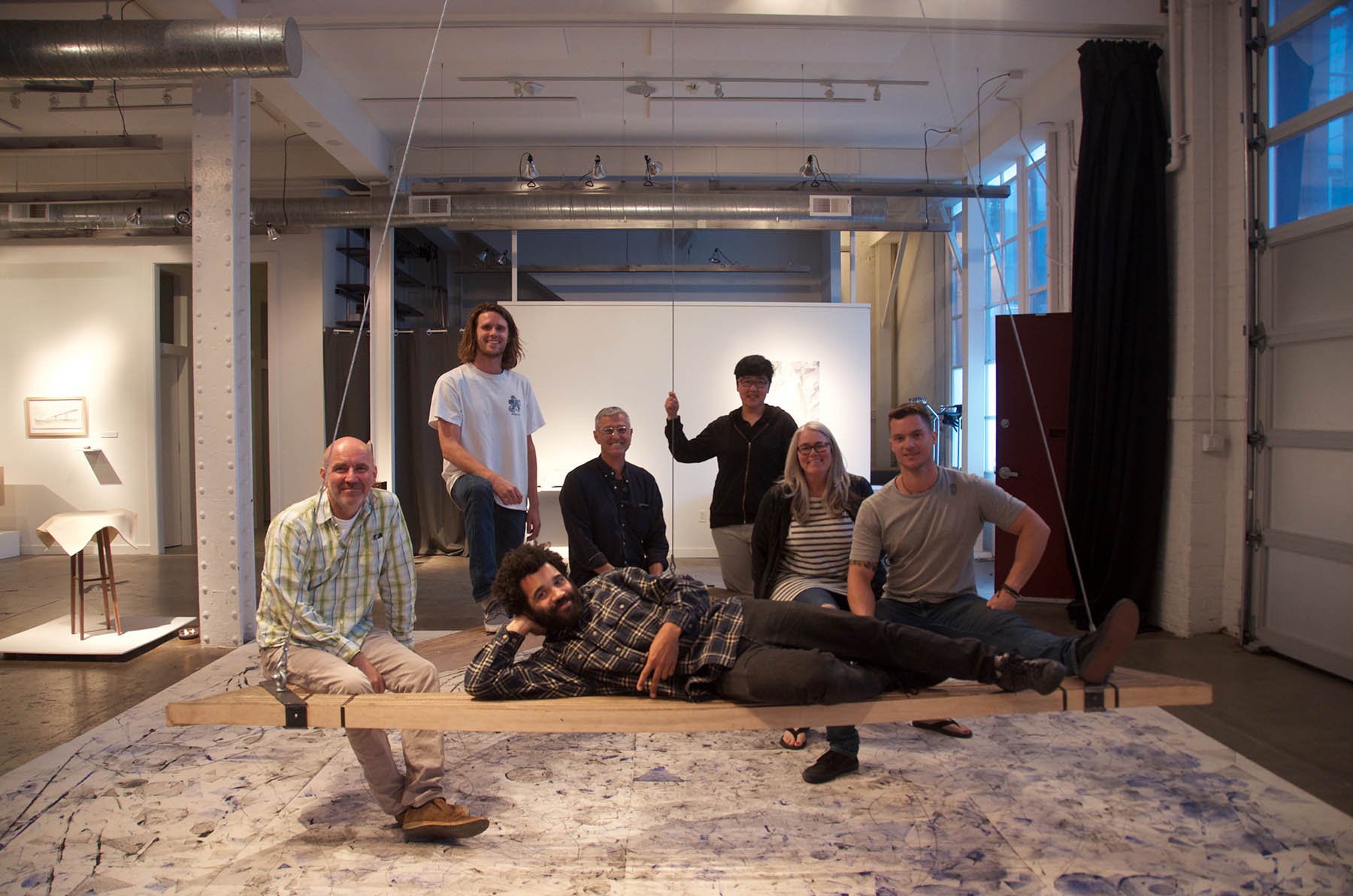
A collaborative thesis exhibit shows both the spirit of cooperation in the program and the incredible faculty to student ratio, with many classes having only four to 10 students. L to R: Chair Russell Baldon, Kjetil Smedal (BFA Furniture 2017), Stephen Moore (BFA Furniture 2017), former Chair Donald Fortescue, future Chair Katherine Lam, Associate Professor Barbara Holmes, and Nathaniel Hedges (BFA Furniture 2017). Photo by Russell Baldon.
The relationships that secure these experiences are the product of decades of work by Chair Russell Baldon, former Chair Donald Fortescue, and the dedicated faculty that make up this program. Even mid reception at FOG, Baldon was looking to the next opportunity, discovering that some trees at Fort Mason (the bayfront complex where FOG is exhibited) were coming down and could be reserved as future material for CCA students. This kind of approach to material sourcing conserves fuel, nurtures the local economy, and provides stability during global times of uncertainty. Plus, Baldon says, local sourcing helps students understand what they are really working with: “Buying pre-milled boards is like getting hamburger meat at the supermarket. It’s fine, but it doesn’t look like a cow. I want them to go to the pasture and look at the cow!”
Baldon is characterized by this enthusiasm and energy, and as he gets ready to pass the chairship to Assistant Professor Katherine Lam, his mind is on how he can do more, not less. He’s talking with Gatti about a store where students can sell work year-round and with Christopher Loomis, an Impact Research Fellow, about installing a mill and drying kiln in new facilities on the expanded San Francisco unified campus to shrink CCA’s sourcing footprint. Baldon’s delight in the harmony of bringing together disparate approaches and materials filters into his open embrace of students’ interests. “We get the student who wants to make industrial office furniture, and then we get the student from a sculpture class who wants to make a table out of smoke,” Baldon says. “I love that grey area. That’s exactly where I want to be—spanning product and theoretical work.”
“We get the student who wants to make industrial office furniture, and then we get the student who wants to make a table out of smoke.”
Chair of Furniture
The future: Making it together
Incoming Chair Katherine Lam brings experience designing custom furniture as well as an understanding of how to build a business from running their own firm, Katherine Lam Design. Coming back to CCA to help students find their own path in the complexities of design, production and entrepreneurship has been deeply rewarding for them. Right now, Lam is thinking, and teaching, about the value of the made object in the world: Whose story does it tell? What relationships does it value? What are the cultural agreements that it promotes? For example, production Furniture students do an exercise where they measure their product in kilowatt-hours, cups of coffee, or hours of joy and pain. This shift helps them look more closely at measures of labor and value in art and design practice.
Lam continues Baldon’s commitment to an inclusive lens for the program and further adds to that conversation through their work with CCA’s Decolonial School, examining how the way we study design can expand and redefine our value systems, how it can help us question and go beyond assumed Eurocentric values. For the past few decades, we have studied through the lens of postcolonialism, learning to recognize that many systems of representation and established ways of operating have their origins in colonial practices of domination. In decolonial work, we are seeking to actively undo these patterns. In furniture, Lam explains, it doesn’t have a specific aesthetic; instead, it is really about “respecting and honoring the myriad ways craft is practiced. Understanding that ‘traditional’ does not mean historical, as craft practices are constantly evolving. This is about valuing non-western aesthetics and practices, not as isolated incidents, but as part of the fabric of the present and importantly, the future.”
Perhaps the future is here now, as just two months after students were displaying their work amid the festivity of the FOG fair, they’re rising to the unprecedented challenge to embrace distance learning to help flatten the curve of the pandemic. This challenge, Lam reflects, is “a great example of how we can push ourselves into new realms of thinking. With no access to the heavy industrial machinery of the Furniture Studio, how do we continue to practice? In other parts of the globe, a make-do approach is a defining aspect of craft practice.” How will we develop and share new ways of working? Those who start on a path of creating are seldom confined to one form. As we are gathering remotely at home, our relationship to the objects that ground our everyday spaces have felt heightened too. Some are putting hand skills to work, creating masks for health workers, while, keeping the mental rigor of craft sharp, CCA faculty like IIT 2020 Latham Fellow Adrien Segal delivered her “Form Follows Data” lecture online, showcasing works where digital meets emotion and when the depth of material and conceptual juxtaposition can transcend into art.
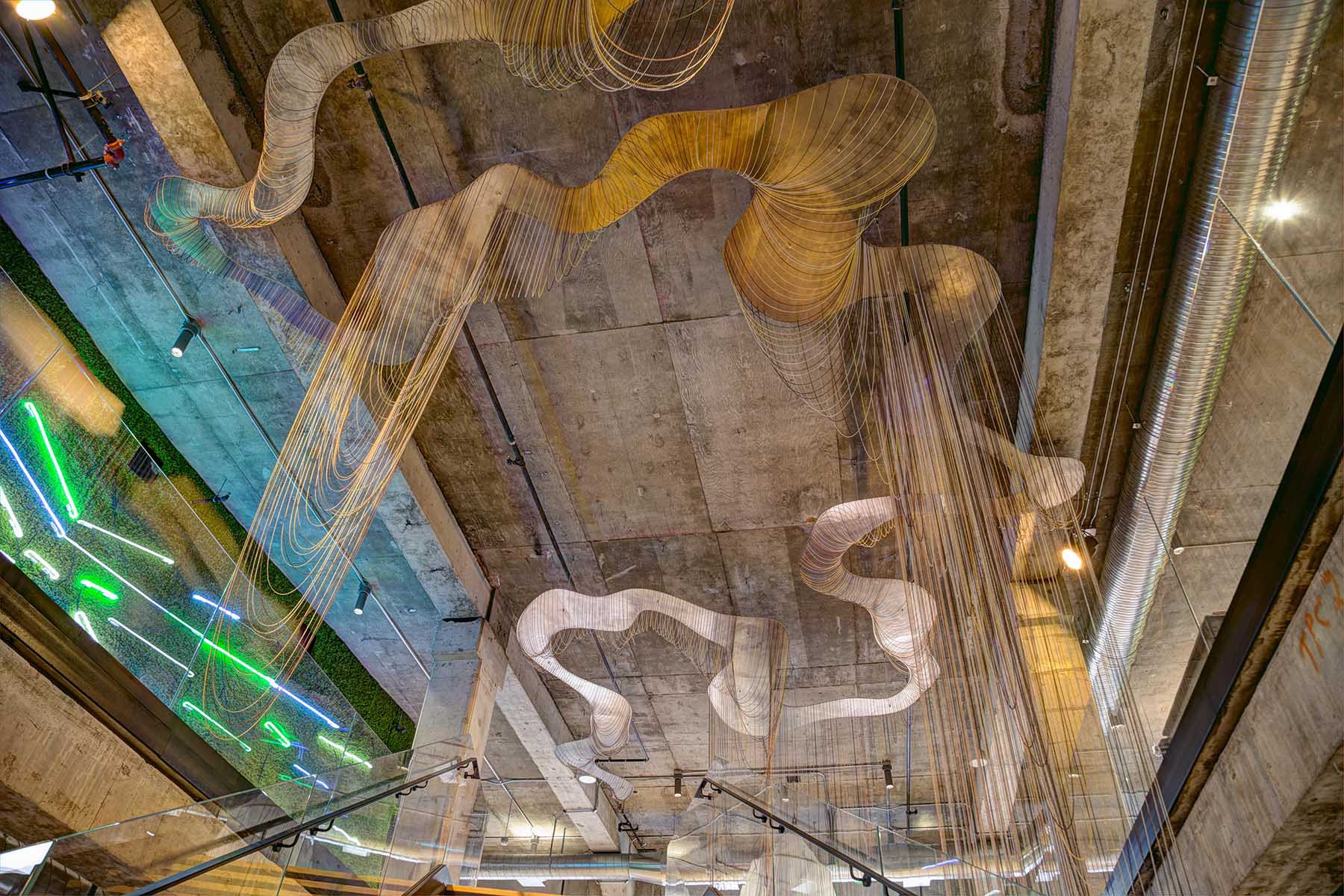
California Water Rights, 2017, by Professor of Furniture Adrien Segal. This suspended, immersive sculpture spans three stories in an atrium. Over 11,000 feet of draped ball chain convey the immense amount of water allocated for use in California, hung from a meandering river following the flow of movement and people. The installation engages viewers with experiential knowledge about how we manage and commodify water. Photo by Austin Dickenson.
The investigation into evolving histories is ever-present as CCA goes from two campuses to one. Baldon has a list of aging trees that, for safety, have to be taken down on the Oakland campus. They’re earmarked for student use. While we certainly don’t love to see them go, if they must come down, what better way to honor the legacy of community than to have incoming voices build it into our new spaces with furniture that tells the story of each of us?

CCA’s community is making the world a better place





